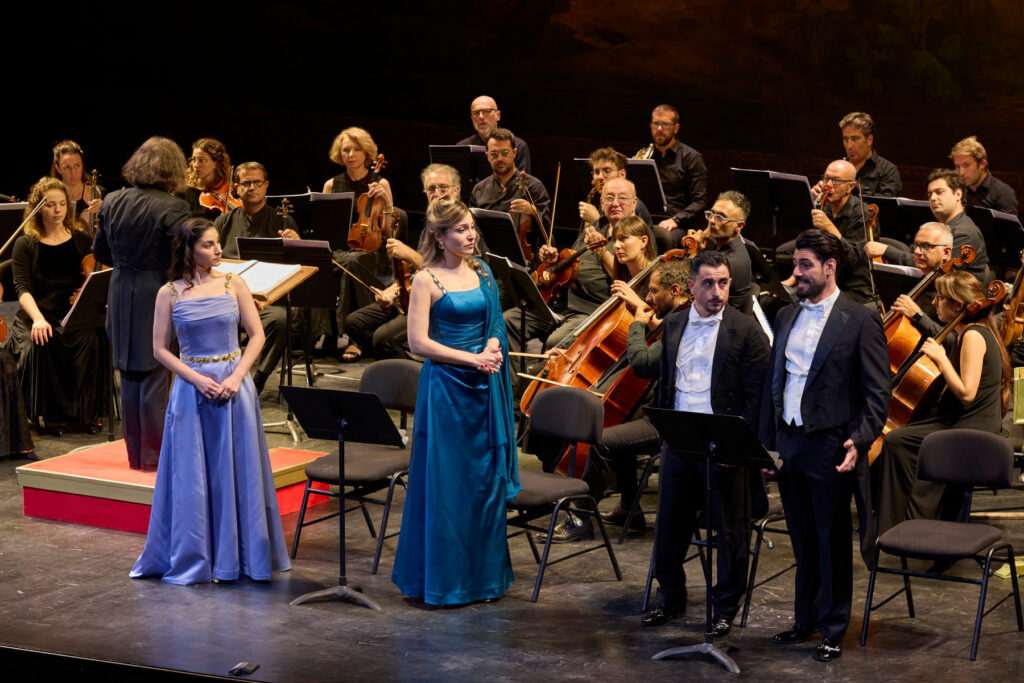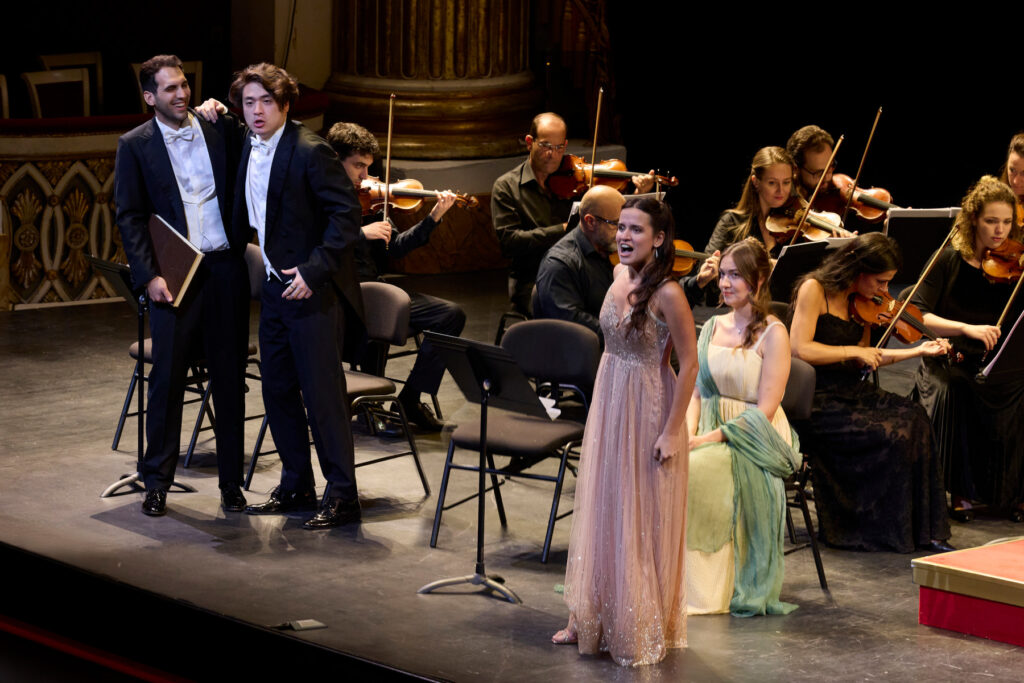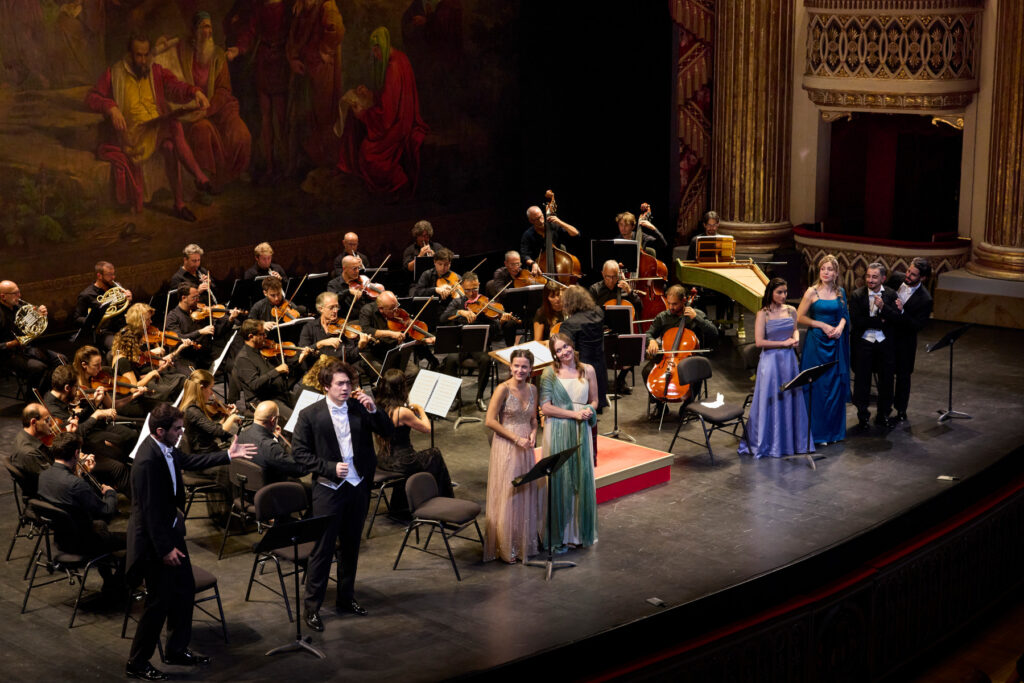Paisiello was one of the composers closely associated with the important operatic tradition of 18th century Naples. By the time he came to study in the city in the mid-1750s, the new format of opera buffa – as opposed to the serious genre of opera seria of the high Baroque – had already been in development for several decades, since at least the time of Pergolesi’s examples in the 1730s for instance. But what makes Paisiello’s work notable – apart from its own intrinsic charm – is how it foreshadows Mozart’s great comic operas, which he would have experienced for himself on his own tours of Italy in the early 1770s.
Paisiello’s relatively early Don Chisciotte (1769) is also an intriguing curiosity, as it adapts Cervantes’s long picaresque novel from the early 17th century to the conventions of opera buffa. As its librettist, Giambattista Lorenzi, explained, the episodes selected from the book were compressed to give the drama unity of place, and the figures of the Countess and Duchess were invented, preserving the typical threefold social hierarchy of such operas, from high born characters to those of middle rank, and lowly servants.

Although given in a semi-staged performance here, the members of the Teatro di San Carlo’s Academy for young singers still generated much dramatic tension and comedy in rendering the delusional Don Quixote and his faithful sidekick, Sancio Panza’s encounter with the aristocratic ladies and the two inept men who seek to woo them, Platone and Galafrone. With the singers lined up at the front of the stage, the acted-out confrontations among the characters created a witty drama of its own, and the antics between the two sets of would-be lovers formed an ironic counterpoint to the Don’s own imagined romance with the non-existent Dulcinea. In the title role, Tianxuefei Sun gave a lyrically sustained account that captured a certain mock heroism, but was too stiffly monochrome to embody the feverish, volatile personality of the character, which gave us the word quixotic in the first place. Sebastià Serra offered more frenetic and exasperated energy as the put-upon but ultimately reliable Sancio.

An apt contrast was drawn by Maurizio Bove and Francesco Domenico Doto between the roles of the two importunate suitors to the Countess and Duchess: the former light-voiced but confident, in agile control of Platone’s buffoonery, and of a very amusing aria delivered in falsetto while disguised as a princess; Doto was heftier as the more bumbling Galafrone. Tamar Otanadze and Chiara Polese bore themselves with sinuous dignity as the haughty ladies, even while taunting and teasing the male lovers, which eventually has the result of leading the women to return their affections. If Polese (the only singer here not to have been part of the Academy) was the bolder singer of the pair, Otanadze’s delightfully Mozartian duet with the servant Carmosina ‘Vaghe auretta’ was still lustrous and sensual. One wonders whether Mozart and da Ponte had some such piece in mind, with the same combination of character types, for the similarly ravishing duet ‘Sull’aria … che soave zeffiretto’ in the Marriage of Figaro, which also precedes a deception.

Maria Knihnytska was delicately coquettish in that servant role, whose text is often given over to Neapolitan dialect, as in the particularly ebullient aria ‘Tu lo focile ’mpietto’. Costanza Cutaia conveyed a teasingly and sometimes chidingly colourful tone in the minor, but no less vivid and mischievous, role of Cardolella. The part of Ricciardetta was cut, and seemingly a fair amount of recitative, aiding the cut and thrust of the comedy in what is, essentially, an opera of ensemble numbers, rather than featuring many solo arias.
Ivano Caiazza led the modern instruments of the house’s own orchestra in a lively but not too driven account of the score – a refreshing opportunity to hear the music of the mid-18th century with the steadier expressive richness of a symphony orchestra without the more impulsive mannerisms of period ensembles. Trumpets provided a silvery veneer in quite a few numbers, adding a winning sense of mock heroism and festivity in this melodious and entertaining opera.
Curtis Rogers
Don Chisciotte della Mancia
Composer: Giovanni Paisiello
Libretto: Giambattista Lorenzi, revised by Ivano Caiazza
Performers:
Don Chisciotte – Tianxuefei Sun; Sancio Panza – Sebastià Serra; La Contessa – Tamar Otanadze; La Duchessa – Chiara Polese; Don Platone – Maurizio Bove; Il conte Don Galafrone – Francesco Domenico Doto; Carmosina – Maria Knihnytska; Cardolella – Costanza Cutaia
Orchestra of Teatro di San Carlo; Ivano Caiazza (conductor)
Teatro di San Carlo, Naples, Italy, 27 September 2025
All photos © Luciano Romano